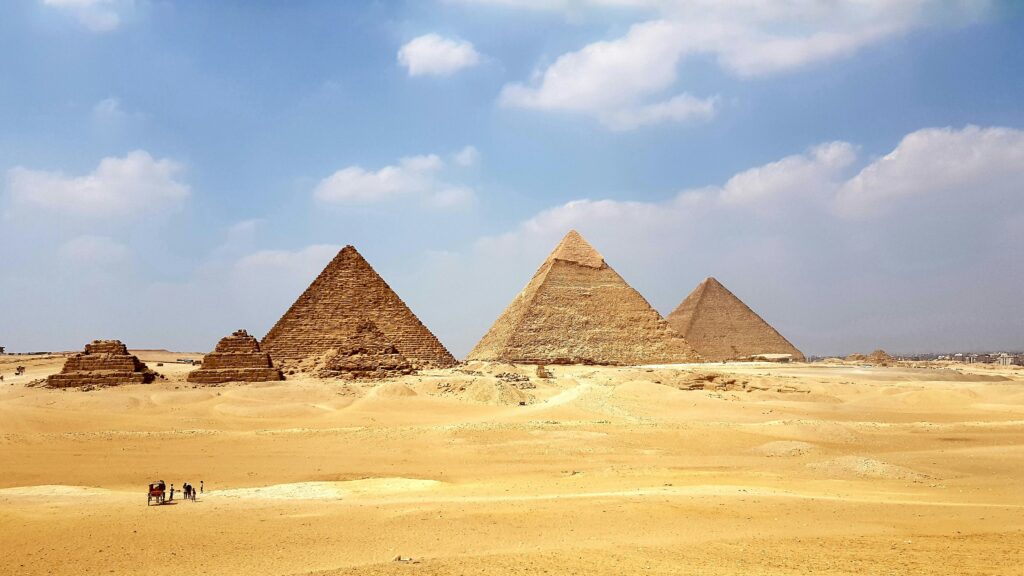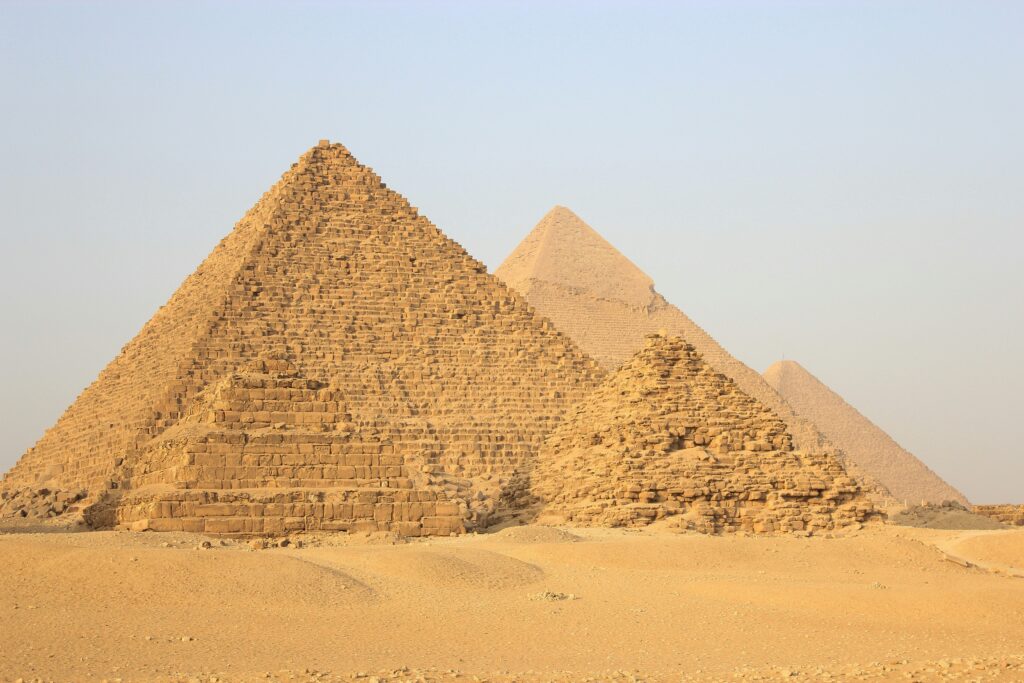The announcement of a plan to resurface the Pyramid of Menkaure in granite has sparked a heated debate among preservationists and archaeologists. The Egyptian authorities revealed their intentions in a video, but the response was immediate and critical. Some compared the plan to “straightening the Tower of Pisa” and voiced concerns about the impact on the historic Giza plateau. Led by a coalition of Egyptian and Japanese experts, the project is set to begin with a year of study before an international team makes a final decision on restoring the granite blocks that once covered a significant portion of the pyramid. The debate brings to light the ongoing tension between restoring ancient structures to their former glory and minimizing intervention.
Plan to Resurface a Pyramid in Granite Generates Heated Debate

Background of the Pyramid of Menkaure
The Pyramid of Menkaure, located in Giza, is the smallest of the three main pyramids in the area. It was constructed during the 26th century BC and is believed to be the tomb of Pharaoh Menkaure. The pyramid is made primarily of limestone, with some sections originally covered in granite blocks. These granite blocks, which are currently visible in the lower portion of the pyramid, have become a point of interest for restoration efforts.
The Announcement of the Resurfacing Project
The Egyptian authorities recently released a video announcing plans to resurface the Pyramid of Menkaure with the original granite blocks that once covered part of its exterior. This announcement immediately sparked controversy and received criticism from various stakeholders. Some preservationists expressed concerns about the potential impact on the historic Giza plateau, while others likened the project to straightening the Tower of Pisa.

Criticism and Controversy
Archaeologists and preservationists were among the critics of the resurfacing project. Some archaeologists argued against altering the pyramid’s original appearance, emphasizing the importance of preserving its historical integrity. In contrast, some critics viewed the pyramid as a potential tourist attraction, comparing it to Disneyland and expressing concern about the impact on the authenticity of the Giza plateau.
Debate Between Preservationists and Restoration Experts
The announcement of the resurfacing project ignited a broader debate between preservationists and restoration experts. Preservationists argued that the pyramid should be maintained in its original state to preserve its authenticity and historical significance. On the other hand, restoration experts advocated for enhancing the aesthetics and extending the preservation of the pyramid through the resurfacing project. This disagreement highlights the ongoing tension in the field of conservation.

Study Period Before Implementing the Project
Before implementing the resurfacing project, there will be a comprehensive study period to evaluate the feasibility and potential impact of the restoration efforts. Thorough research will be conducted to assess the condition of the pyramid, the stability of the existing structure, and the viability of restoring the granite blocks. The duration of this study period is yet to be determined, but it is expected to be at least a year.
The Role of Egyptian and Japanese Experts
The resurfacing project will involve collaboration between Egyptian and Japanese experts. Both teams bring their expertise and experience to the table, contributing to a joint approach in planning and implementing the restoration efforts. The involvement of Japanese experts highlights the international cooperation and knowledge sharing that is taking place in the field of archaeology and preservation.
International Team’s Decision
Following the study period, an international team will be responsible for making the final decision regarding the resurfacing project. This team will consider various factors, such as the feasibility of the project, its potential impact on the pyramid’s historical significance, and the opinions of experts from different disciplines. The decision-making process will likely be a collaborative effort, aiming to ensure a well-informed and balanced outcome.
Response from Mostafa Waziri
Mostafa Waziri, the secretary general of Egypt’s Supreme Council of Antiquities, announced the resurfacing project and labeled it “the project of the century.” While he has not provided further comments on the project, Dr. Waziri has dismissed online criticism, referring to it as “social media talk that has no basis in truth.” His response indicates a commitment to moving forward with the project despite the controversy surrounding it.
Clarifying Misconceptions about the Granite Blocks
Some online critics have wrongly assumed that the smooth granite blocks visible on the pyramid are a recent addition. However, these blocks are believed to be the pyramid’s original granite blocks that have been in place for centuries. Photographs from as early as 1907 depict the pyramid with these granite blocks, indicating their historical significance. It is important to clarify these misconceptions to better inform the ongoing debate.
Conservation vs Intervention in Ancient Structures
The debate surrounding the resurfacing project reflects the broader tension in the field of conservation. One perspective advocates for returning ancient structures to their original splendor, emphasizing the importance of historical accuracy. On the other hand, another perspective emphasizes minimal intervention and preservation, allowing the passage of time and natural degradation to shape the appearance of these structures. Both approaches have their pros and cons, and the ultimate decision should be made with careful consideration of all relevant factors.
In conclusion, the plan to resurface the Pyramid of Menkaure in granite has generated a heated debate among archaeologists, preservationists, and restoration experts. The announcement of the project has sparked controversy, with concerns raised about the impact on the historic Giza plateau and the authenticity of the pyramid. The ongoing debate highlights the differing perspectives on conservation and intervention in ancient structures. As the study period commences and the international team takes charge, the decision regarding the resurfacing project will ultimately shape the future of the Pyramid of Menkaure.

